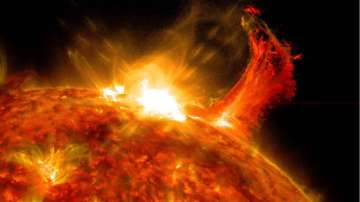On Saturday, Starlink - the satellite branch of Elon Musk's SpaceX - issued a warning regarding a "degraded service" due to the Earth being hit by the largest geomagnetic storm in two decades, caused by solar activity. Starlink owns approximately 60 percent of the nearly 7,500 satellites orbiting Earth and is a key player in satellite internet services. Musk stated in a recent post on X that the Starlink satellites were under significant pressure due to the geomagnetic storm, but, so far, they were holding up.
The U.S. National Oceanic and Atmospheric Administration (NOAA) announced that the storm is the most significant since October 2003 and is likely to continue through the weekend, posing potential risks to navigation systems, power grids, satellite navigation, and other services.
Thousands of Starlink satellites in low-Earth orbit use inter-satellite laser links to transmit data between each other in space at the speed of light, enabling the network to provide internet coverage worldwide.
It's possible that even after the storm subsides, signals between GPS satellites and ground receivers may be scrambled or lost, according to NOAA. However, since there are many navigation satellites, any disruptions should be brief.
What is happening?
The sun has been emitting strong solar flares since Wednesday, resulting in at least seven plasma outbursts. Each eruption is known as a coronal mass ejection and can carry billions of tons of plasma and magnetic fields from the sun's outer atmosphere.
NOAA states that the flares seem to be associated with a sunspot approximately 16 times the diameter of Earth. This activity is part of the solar cycle that ramps up towards its peak every 11 years.
NASA has assured that the storm poses no serious threat to the seven astronauts aboard the International Space Station. However, increased radiation levels remain a concern, and the crew could relocate to a better-shielded area of the station if necessary.
ALSO READ: ISRO successfully tests PS4 engine re-designed using additive manufacturing techniques
